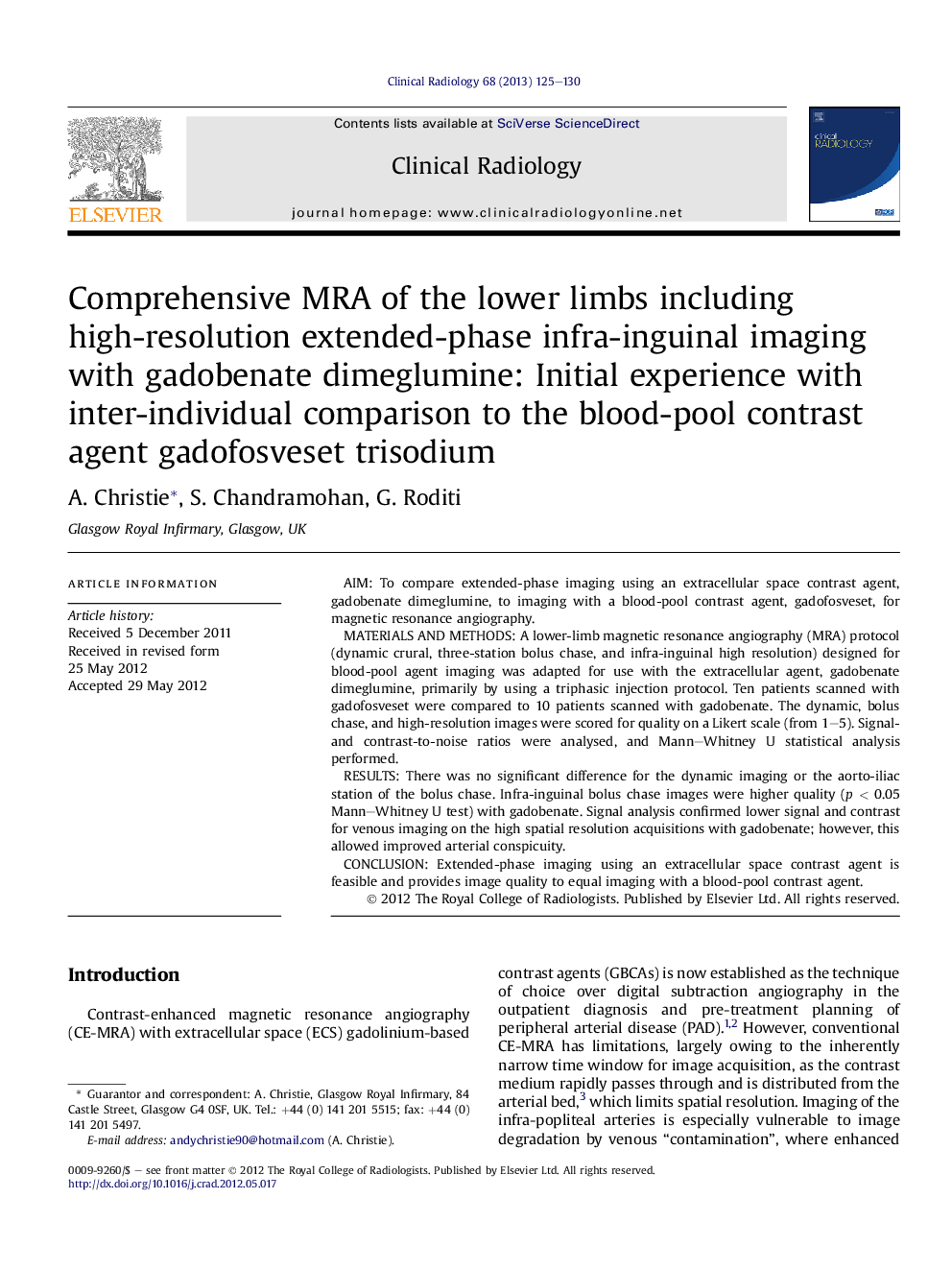| Article ID | Journal | Published Year | Pages | File Type |
|---|---|---|---|---|
| 3982145 | Clinical Radiology | 2013 | 6 Pages |
AimTo compare extended-phase imaging using an extracellular space contrast agent, gadobenate dimeglumine, to imaging with a blood-pool contrast agent, gadofosveset, for magnetic resonance angiography.Materials and methodsA lower-limb magnetic resonance angiography (MRA) protocol (dynamic crural, three-station bolus chase, and infra-inguinal high resolution) designed for blood-pool agent imaging was adapted for use with the extracellular agent, gadobenate dimeglumine, primarily by using a triphasic injection protocol. Ten patients scanned with gadofosveset were compared to 10 patients scanned with gadobenate. The dynamic, bolus chase, and high-resolution images were scored for quality on a Likert scale (from 1–5). Signal- and contrast-to-noise ratios were analysed, and Mann–Whitney U statistical analysis performed.ResultsThere was no significant difference for the dynamic imaging or the aorto-iliac station of the bolus chase. Infra-inguinal bolus chase images were higher quality (p < 0.05 Mann–Whitney U test) with gadobenate. Signal analysis confirmed lower signal and contrast for venous imaging on the high spatial resolution acquisitions with gadobenate; however, this allowed improved arterial conspicuity.ConclusionExtended-phase imaging using an extracellular space contrast agent is feasible and provides image quality to equal imaging with a blood-pool contrast agent.
